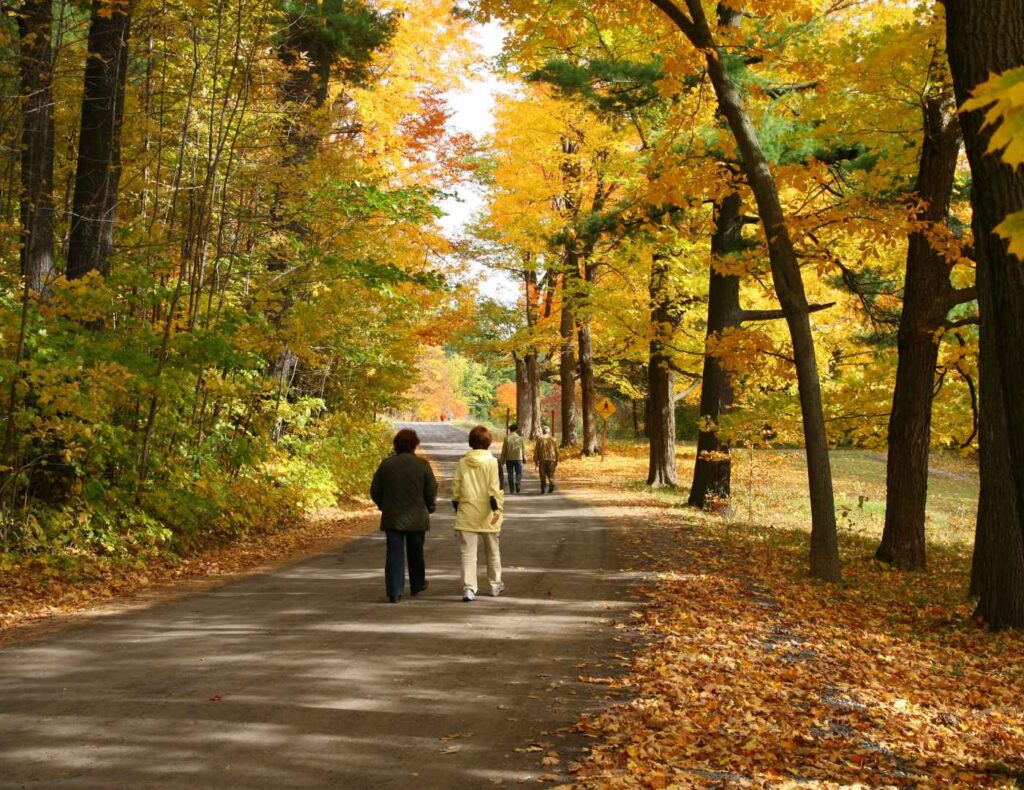As the weather starts to cool off, those who exercise outdoors begin to feel the impending dread of winter. While you could always take your exercise regimen indoors, you don’t have to give up on outdoor exercise just yet. Keep in mind these tips for exercising safely in the fall to enjoy the great outdoors deep into November.

What are the benefits of exercising outdoors in the fall?
The colder months of the year are notorious for zapping one’s desire to exercise. This all starts with the holiday season monopolizing our time and then falls into a habit until springtime. Starting and maintaining a routine throughout the fall helps set you up for success for the rest of the year.
Even exercising just 20 minutes a day helps strengthen your immune system, which is absolutely crucial during the colder months, when cases of flu and colds run rampant. And while the chill in the air may dissuade you from getting outside, this is actually the perfect weather for much physical activity. The cooler temperatures keep you comfortable for longer as you work up a sweat.
However, just because the weather is better for exercise, it doesn’t mean you don’t have to prepare for exercise as you normally would. Don’t forget to stay hydrated and wear sunscreen.
What do I wear when exercising outdoors in the fall?
Knowing what to wear for outdoor exercise in the fall can be tricky. Shorts have long since been put away, but it’s likely still too warm for your heaviest gear. At this time of year, layering is key. Your bottom layer of clothing should be moisture-wicking, not to protect yourself from the elements, but your own sweat.
As your heart gets pumping and your body temperature rises, sweat cools your body. If you’re wearing the wrong type of clothing, however, the fabric will trap your sweat. The cooling effect may feel nice initially, but it can be dangerous depending on the weather, as the wet and cold can make you sick. Polyester and nylon are common moisture-wicking fabrics to wear as your first layer.
The fabric of your second layer doesn’t matter as much—the most important part is that it keeps you warm. Try to stick to a lightweight option so that, if you get too hot and have to remove it, you can easily tie it around your waist or shoulders. Jackets may be better options than sweaters this time of year, as they can be unzipped for better air circulation.
Always have an exercise “Plan B”
No matter the time of year, a storm might make it impossible to continue your outdoor exercise regimen. Develop a “Plan B” fitness routine ahead of time so that, when the time comes, you won’t be left wondering what you should do. If you don’t want to pay for a gym membership, you’re not out of luck. There are plenty of online exercise regimens you can follow for free, from yoga to weight training.
Maintain a healthy lifestyle with the help of an at-home caregiver
As an older adult, there are some days when living a healthy lifestyle feels particularly difficult. Whether you struggle with running errands, preparing quality meals, or remembering to take your medication, an at-home caregiver can help.
At Home Care Powered by Nexim, we provide clients in the TORONTO area with the support they need. For more information on our services, give us a call at (416) 533 – 3600.
